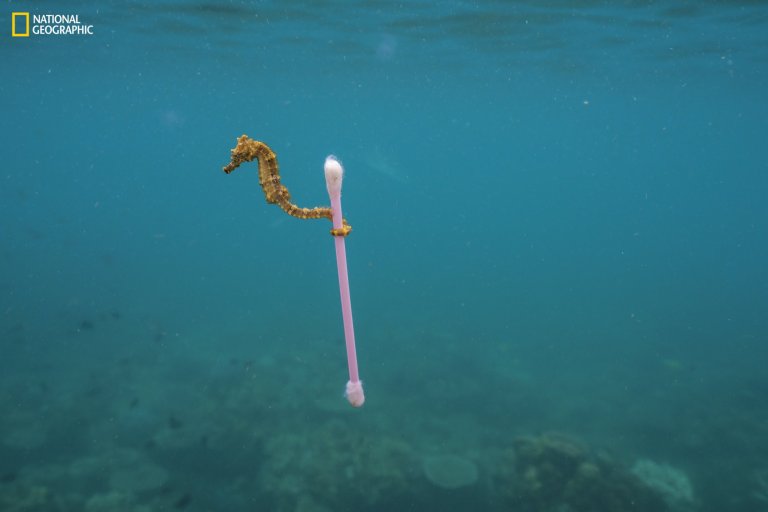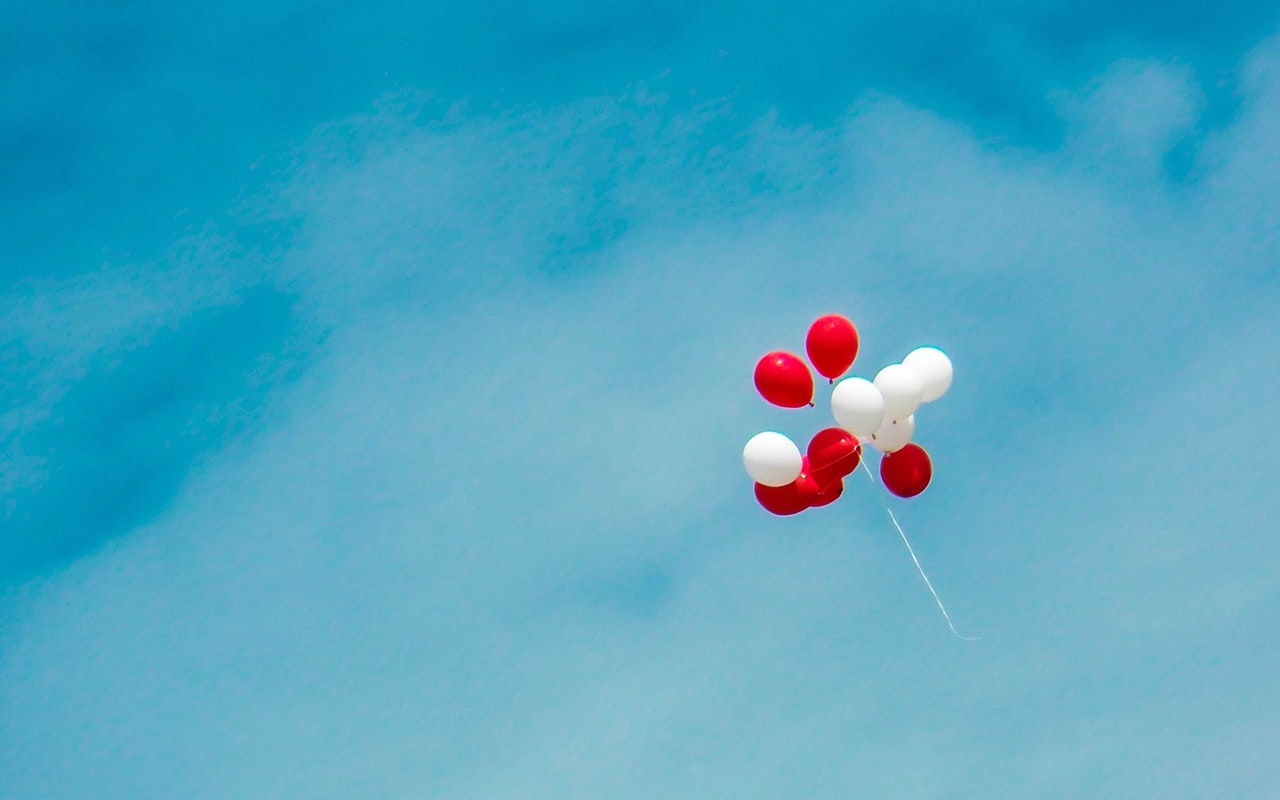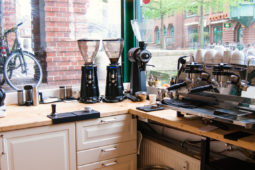
Lately, I have read too many news and videos related to the BIG problem of plastic pollution in the ocean and I think it’s great that this kind of information is present to raise awareness and reduce our plastic consumption.
World Oceans Day was celebrated on 8 June, a day to be aware of the importance of the sea in our lives and also a call for action to reflect on how we can take care of it and generate actions that preserve marine life and reduce the human footprint as much as possible.
Because of the proximity of this date, I have seen a lot of videos and read notes, which personally make me very sad, about the enormous amount of plastic that ends up in the sea polluting not only the ocean but also affecting the animals living there. National Geographic magazine has put it in a GREAT way on its June 2018 cover, where a plastic bag simulates an iceberg. Not only is this idea great, it was also created by a great Mexican artist Jorge Gamboa.
The Internet makes palpable the reality that one believes to be distant
One of the great advantages of the Internet is that it allows information to flow and we can learn things that we may not have known were happening before. I’ve seen videos about a whale with over 8 kilos of plastic bags inside its intestines, different plastic items inside birds stomachs and penguins living on a plastic island – what’s going on with us? Are we so selfish that we can’t see that taking care of our own planet is taking care of ourselves and the future?
Here are the videos to make you as angry as I am. If this doesn’t cause you to reduce plastic consumption in your life, I don’t know what else will.
Powerless, is it?! I’m the kind of person these kind of things makes me very sick . It’s clear to me that with small actions you can make a big change and inspire others. Every action, no matter how small it may seem.
You think it doesn’t affect you? Reduce your plastic consumption!
If we are what we eat and the fish eat plastic, what do you think you’re eating?
If you are one of those people who think that because you are not close to the sea it does not affect you, My friend, you need a reality check. Here are a couple of facts:
- 50% of the oxygen we breathe comes from the oceans
- Coral is in danger of extinction, they are not only the ecosystem of many marine species but also protect against the impact of major storms.
- Regulates the global climate
- More than 200 million jobs depend directly on the ocean
- Some plastics have polluting chemicals that produce toxic effects. Jellyfish absorb them, fish eat them and you know who eats the fish….you. These toxins are related to cancer, autoimmune diseases, and infertility, among other diseases.
The problem is real. The so-called “Garbage Patch” that is floating in the Pacific Ocean is already between 700 000 km² and 15 000 000 000 km² (depending on how you measure it) and is equivalent to twice the size of Texas!
Every year 9 million tons of plastic (do you get that size?) end up in the ocean. More than 5 trillion plastic pieces are floating in our seas.
However, the problem is not just about the ocean; reducing plastic consumption would help other parts of the planet. The production of plastic bags in recent years has increased exponentially and pollute entire communities.

Source: The Ocean Cleanup
How can I do my part?
First of all, change the chip: Think about reusing, not discarding. There are very simple actions that could make a difference. These are everyday things that you don’t notice but they pollute a lot.
1. Take a bag to the supermarket
To begin with, plastic bags cannot biodegrade, but rather they photodegrade, which means that they do not disintegrate completely, but they defragment into millions of tiny fibers, which often cannot even be filtered out. This process can take between 400 and 1,000 years. Thinking that a bag is used on average only for 12 minutes is total human stupidity. To avoid this, always carry cloth bags or, if you are driving, cardboard boxes so that you can store your shopping there. Also, if your supermarket offers it, opt for paper bags instead of plastic bags.
If you are going to buy clothes you can take a backpack with you and keep your shopping there instead of getting a bag.
In Europe, for example, most stores (supermarkets, department stores, electronics stores, etc.) charge for the plastic bags, or even in some places they don’t even sell plastic anymore. What I usually do is always carry a cloth bag in my handbag in case I need it or if I decide to go to the supermarket before I get home.
The plastic bags you already have at home can be recycled or put to another use. I love having the “happy problem” of having almost no plastic bags at home anymore.
2. Use reusable water bottles and do not buy bottled water.
About one million plastic beverage bottles are sold every minute. The only advantage of bottles is that they can be recycled, but those that are not recycled take more than 500 years to disintegrate. There are different metal or glass options you can take with you everywhere that will reduce your plastic consumption.
3. Changes short-usage products such as straws or cotton swabs
A consumption of a few minutes that will take years to disintegrate. Just in the United States and England, more than 550 million straws are disposed of every day for a consumption of approximately 20 minutes. This is affecting marine animals.
Order your drinks without straw and if you need to use one, you can buy reusable stainless steel straws. Many are portable and easy to clean.
The same thing happens with the cotton swabs, many of them have plastic handles and for a consumption of just a few minutes, they pollute for many years. To avoid this, buy swabs that have wooden, bamboo or paper handles.

Source: Justin Hoffman / National Geographic’s Planet or Plastic? campaign, a multi-year initiative aimed at raising awareness of the global plastic crisis and reducing the amount of single-use plastic that is polluting our world’s oceans.
4. Change your toothbrush and razor
Other products that are plastic and not recycled are toothbrushes and rakes. To reduce plastic consumption there are also alternative options such as toothbrushes made of bamboo or avocado bone.
There are options for reusable stainless steel razors. This way you can consume these products in smaller quantities and definitely without using any kind of plastic.
5. Change your shampoo and bath gel
Buying shampoo and bath gel in plastic bottles generates a lot of plastic consumption. An estimated 552 million plastic shampoo bottles are used each year. Lush features a shampoo tablet that would be the equivalent of 3 medium bottles of shampoo, completely eliminating the need for plastic packaging. In addition, they are made with 100% natural ingredients, they are made ethically and are free of animal testing, and Lush is super cool!
6. Food in glass Tupperware, not plastic plates
One thing that bothers me is seeing the trash can in my office after lunch and seeing that it’s full of Styrofoam dishes for everyone who bought take-out. The time of use of these dishes is literally 5 minutes: from the restaurant to the office ☹
Try to go with your glass Tupperware and get your food served there, besides being more ecological, it is much healthier because it is proven that food in Styrofoam releases substances that affect your health.
7. Try to consume products without plastic packaging
Try to eat those products that are not packed in plastic, why do they put packed apples? have you noticed that a lot of fruit and vegetables are packed without any reason? Try to eat what doesn’t have plastic, such as nuts and grains per kilogram, or it’s even better to prefer foods without plastic packages. For example, instead of a jam in a plastic container, buy one in a glass container.
8. Do not throw balloons to the air
I’m a balloon freak, I love balloons. I always think that every birthday should have a balloon, but balloons are just another pollutant. The same way when you throw balloons into the air it looks very nice, however, everything that goes up has to go down and they usually fall down into the sea or into a place where obviously nobody takes care of them.
It is estimated that by 2050 every seabird on the planet will have eaten some kind of plastic.

Here’s a National Geographic article to find out where does the garbage we generate end up?
Helping to reduce plastic consumption is in our hands
Much of the plastic generated can be avoided. It is a material that takes many years to degrade and often cannot even be degraded. Reducing plastic consumption is our responsibility.
Another way to help is not to be silent and to demand our governments to take more environmentally friendly measures and promote recycling.
Research, change your habits and share. Plastic not only impacts our lives but also claims the lives of many, many animals. Let us be less selfish and more responsible.
#WorldOceansDay
Sources:
National Geograpic: Plastic Pledge
MetroUK
Wikipedia: Isla de Basura
Twimg.com
Conserving Now: Plastic Bag Environmental Impact
Sources & donation:
WWF: Oceans
Plastic Oceans: Take action
The Ocean Project
World Ocean Network






 Hello! It's me! I am a dog lover Mexican girl living in Europe. This is my blog, where I share a little piece of me and my life. So if you are interested in traveling, food and responsible consumption...welcome!
Hello! It's me! I am a dog lover Mexican girl living in Europe. This is my blog, where I share a little piece of me and my life. So if you are interested in traveling, food and responsible consumption...welcome!



